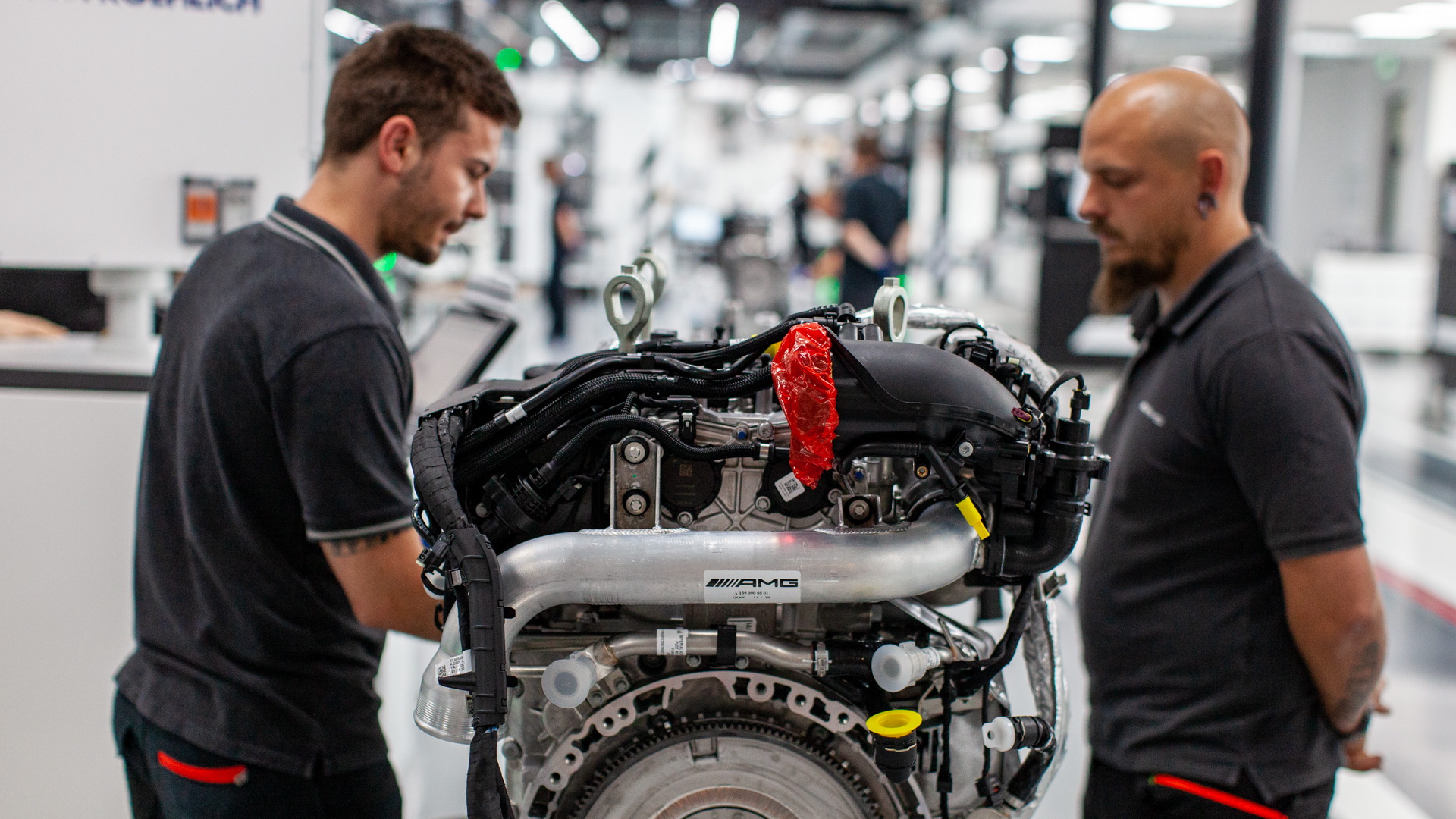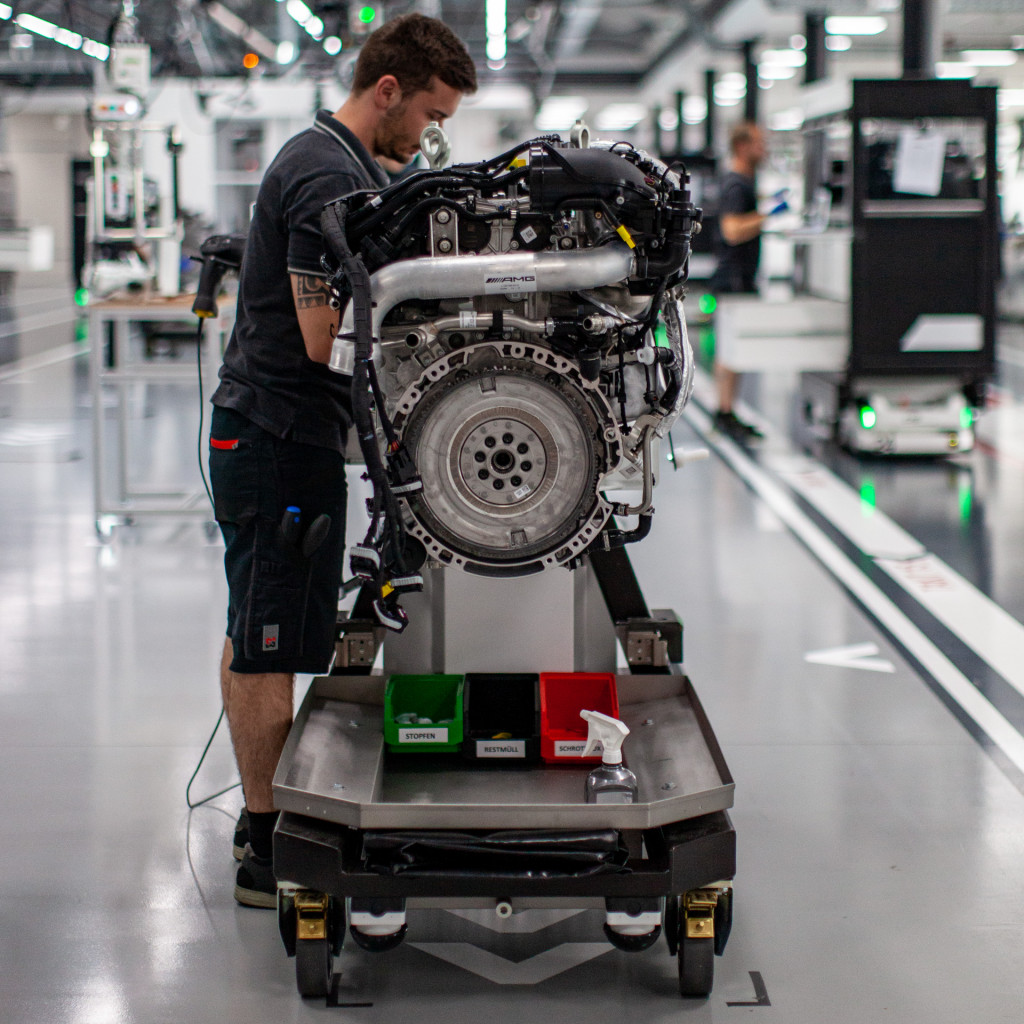
A smaller package just got a bigger bang.
On Friday, Mercedes-Benz AMG unveiled its most power-dense
engine yet, a 416-horsepower turbo-4 destined for the automaker’s 45 Series
line sometime soon.
The 2.0-liter turbo-4 is the replacement for the 381-hp
engine found underhood the CLA45, GLA45. The new engine, which comes in two
tunes including a 382-hp base version and a 416-hp S version, uses a more
efficient turbocharger and upgraded cooling to improve performance and could
arrive in future AMG
45-Series cars including the GLA45, CLA45, and A45—perhaps more.
The new turbo-4 uses a new all-aluminum cylinder block with
identical dimensions to the outgoing engine, and most of its components are
new. Compared to the outgoing version, the new engine is flipped in the engine
bay and places the turbochargers and exhaust manifold closer to the firewall
with the intake up front. It’s an evolution of the AMG principal, “Hot stuff
and cold stuff don’t mix,” although it created very specific problems.

Hot and cold
Namely, cooling the new engine with turbos placed so far
into the engine bay was a significant challenge, according to engineers. The
new engine features separate cooling systems for the block and the cylinder
heads, 18% larger exhaust valves, and a specially designed engine cover that
redirects air toward the turbochargers for more cooling. The air conditioner
can also further cool the engine. The cylinder coating is slicker too, and the
0W-20 oil it uses in is a lower viscosity for better cooling. The electronic
wastegate, which is more efficient this time around, was designed to handle
more heat.
At its heart, new turbos force-feed the turbo-4 more air for
bigger power. The compression ratio was increased from 8.6:1 to 9.0:1, and
although its 416 hp (in S versions) was rated with 95-octane fuel, AMG said
when it arrives in the U.S. the new engine should rate well on 93-octane
gasoline—even run on lower octane fuel if needed. The new turbochargers spin up
to 169,000 rpm and create 30.5psi of boost pressure, compared to 26.1 psi for
the outgoing turbocharger. That’s partially due to roller bearings used in the
twin-scroll turbo that let it spin more freely, similar to the AMG GT 4-Door
Coupe’s twin-scroll turbos found in the twin-turbo 4.0-liter V-8.
When it was announced, the outgoing engine’s 187.5 hp per
liter of displacement in the GLA45 and CLA45 was the most power dense
production engine on the planet. The new engine unveiled Thursday takes over
that top spot and is the most powerful production turbo-4 built from a
mainstream automaker with 208 hp per liter
The new turbo-4 also debuts AMG’s newest production process
that still pairs one engine technician with one engine, but partially automates
the manufacturing process with carts and tools that travel along the production
line with engineers automatically.
AMG’s Chief Operating Officer Emmerich Shiller said the new
process is 25-30 percent more efficient for the engine builders who take about
two hours to hand-build each turbo-4 engine.

Power to the people
When the engines first appear in AMG 45 Series cars later
this year, their power delivery could surprise fans of the small cars. That’s
because the outgoing engine in the GLA45 and CLA45 had a flatter torque curve
that arrived quickly and stayed flat throughout most of the rev range.
The new turbo-4 has a more linear torque curve this time,
with an initial surge of torque arriving at roughly 2,000 rpm and building
toward its peak of 369 pound-feet at around 5,200 rpm (354 lb-ft at 4,800 rpm
in the base version). The outgoing engine’s 350 lb-ft arrived at 2,000 rpm and
stayed flat until 5,000 rpm.
"We already set the benchmark in the segment with the
preceding engine,” AMG boss Tobias Moers said. “Not only is the output per
liter unrivalled for a turbocharged engine, the high level of efficiency also
demonstrates that the internal combustion engine still has further
potential."
The new engine also revs more freely, too. The engine revs
up to 7,200 rpm, higher than the outgoing model, and it makes up to 416 hp at
6,750 rpm in S versions, 382 hp in base versions.
AMG didn’t say anything about the new turbo-4’s future, but
compared to the twin-turbo V-6 found in 43 Series models, the new engine can
make more horsepower and nearly the same amount of torque.
We’ll know more when the engine hits the streets in the
U.S., which should be later this year.
by Aaron Cole
http//www.boscheuropean.com
No comments:
Post a Comment